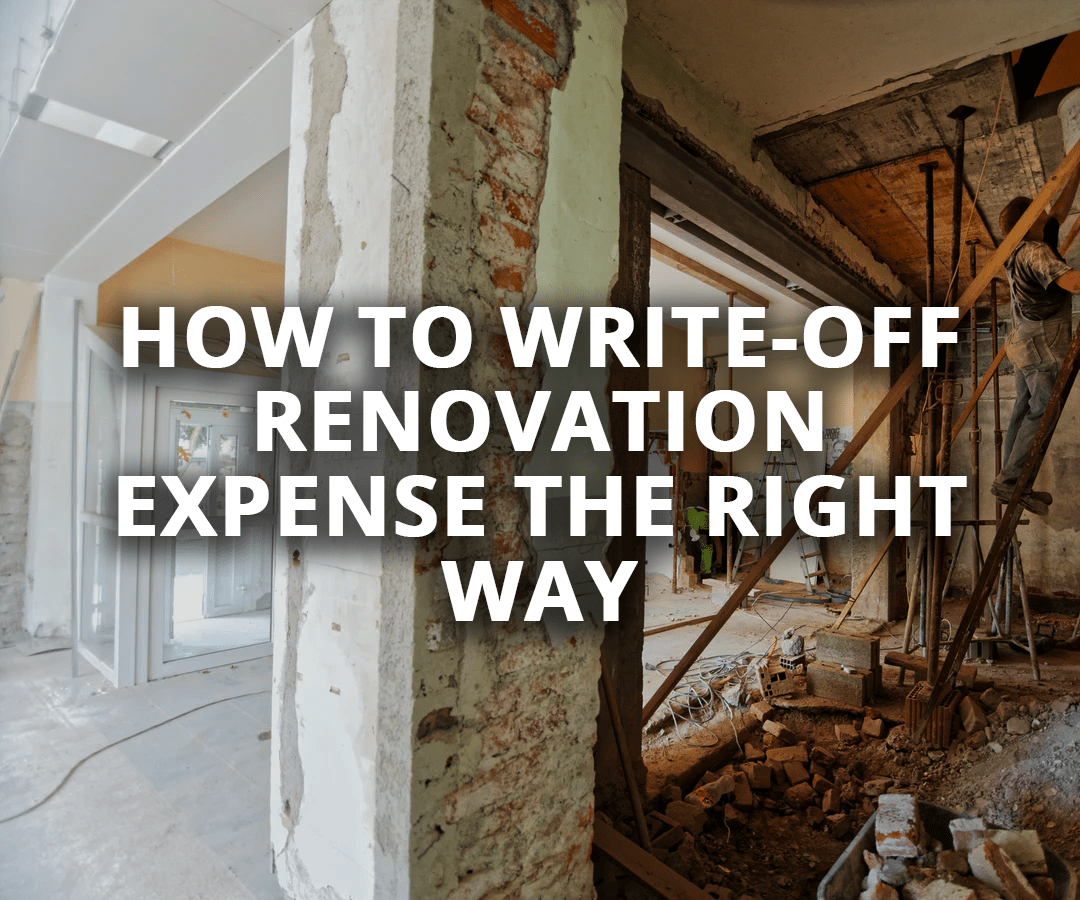A few days ago, I came across an article written by Jamie Golombek, CIBC Managing Director, Tax & Estate Planning on Financial Post. The title of the article is: “Difference between current and capital expenses has big tax consequences for rental property owners.“

I thought I could use this opportunity to share with you why the difference between the current and capital expenses has big tax consequences for real estate investors.
In the real estate investing world, spending on money on updating the house is inevitable, even if you are buying a new place. You’re bound to need an old pipe fixing using a service like MetroPHA, or if it’s a new house you may look into adding some more features to it once you move in, like a new air conditioning system or a nice dishwasher. If you’re spending money on a renovation then it can be very costly – from getting skip bin hire sydney to hiring contractors to temporarily relocating tenants – so there can also be some pretty big tax implications if you’re not careful.
CRA has set out criteria to help taxpayers to determine whether the expenses incurred are considered current expenses, which are deductible against rental income, or capital expenses, which are added to the capital cost of the building and can be deducted against the future sale price of the property.
Just because you spend a few thousand dollars on painting the entire rental property, it does not necessarily mean that you can write off the painting cost as current expense.
Why does it matter to you?
If an expense is deemed to be a current expense, it can be 100% written off against rental income immediately. If you incur a rental loss, the rental loss can then be offset against your other income, including employment income.
Assuming your employer has been withholding the proper amount of taxes based on your employment income, this rental loss can trigger a tax refund.
On the flip side, if an expense is considered capital expense, the taxpayer gets NO tax write off immediately. The expense is added to the cost of the building. When you sell the property a few years down the road, the expense is part of your cost of the building, and you can claim it against the sales proceeds.
You can still claim a portion of this cost as wear and tear against your rental income as a tax deferral. The amount of wear and tear that you can claim is usually 4% on the cost you’ve incurred.
When you sell the property, all the wear and tear that you claimed would have to be taken back into income, assuming you’re selling the property for a profit.
You can then claim the renovation cost, plus the purchase cost of the building, against the sales proceeds. The profit you make is taxed as capital gain (assuming this is a long-term rental investment).
As we know, capital gain is only 50% taxable. In another words, the capitalized expenses are only 50% deductible, against the profit you make some time down the road. ☹
As a taxpayer, you want your expense considered current expense. You already spend the money now, you want your write off immediately.
How do you determine if an expense is considered capital or current?
Similar to many areas in the Income Tax Act, the determination between capital and current expense isn’t always obvious.
Generally speaking, if you make an improvement to the property that has lasting benefits over a number of years, and the expense incurred might even extend the life of the asset, chances are, your expense is considered capital expense.
For example, if you are replacing old carpet with new hardwood floor, the hardwood floor is an upgrade and has long-lasting benefit over a number of years, the cost of the new hardwood floor is considered capital expense.
Current expenses however do not provide long lasting benefits. The expenses are incurred to restore the asset to the same condition.
For example, you paint the entire house to give the house a fresh look and to attract a new set of tenants, the painting cost is incurred to refresh the house, there’s no change in functionality, no upgrade, no lasting benefits. The painting costs are generally considered as a current expense and they are deductible against the rental income as incurred. Similarly, if you happen to do a few repairs, replace the existing electrical systems, or change conditioning units with the help of a reputed electrical service (find more info here), then they are also counted as a current expense.
But there’re exceptions…
Admittedly, the criteria to decide if an expense is capital or current is not black and white.
If you purchase an older home and you renovate to get the house ready for rent immediately after you acquire the property, all costs incurred during that period, from something as big as getting Lynchburg stamped concrete installed to as small as painting the house, are considered capital expense.
Similarly, if you are planning to sell the house, but decide to spend some money to freshen up the house to get it ready for rent, all the costs incurred to get the house ready for sale, are considered capital expense.
Next week, I will dive deep into the court case mentioned in the article. Stay tuned.
Until next time, happy Canadian Real Estate Investing.
Cherry Chan, CPA, CA
Your Real Estate Accountant






Jonah T
Great article! I look forward to your follow up. Also I am not sure I understand your comment “As we know, capital gain is only 50% taxable. In another words, the capitalized expenses are only 50% deductible, against the profit you make some time down the road.” When I look at CRA literature on this, I take the property sale price, less associated selling cost (renovations [less any claimed CCA], lawyer, realtor, etc), and then half of that is my capital gains tax. I was able to fully deduct expenses.